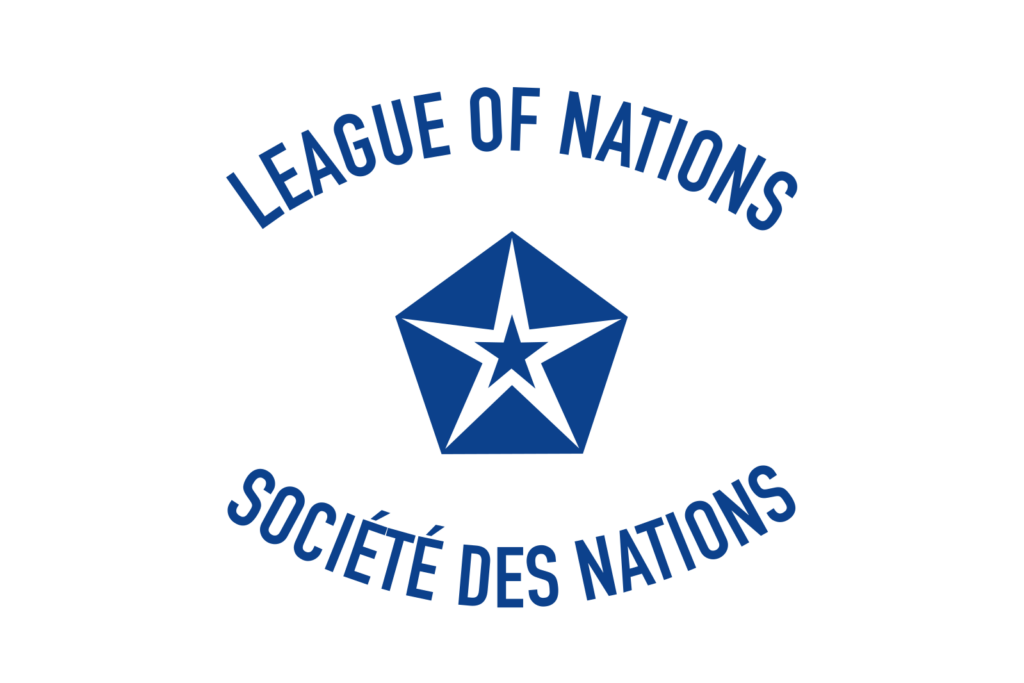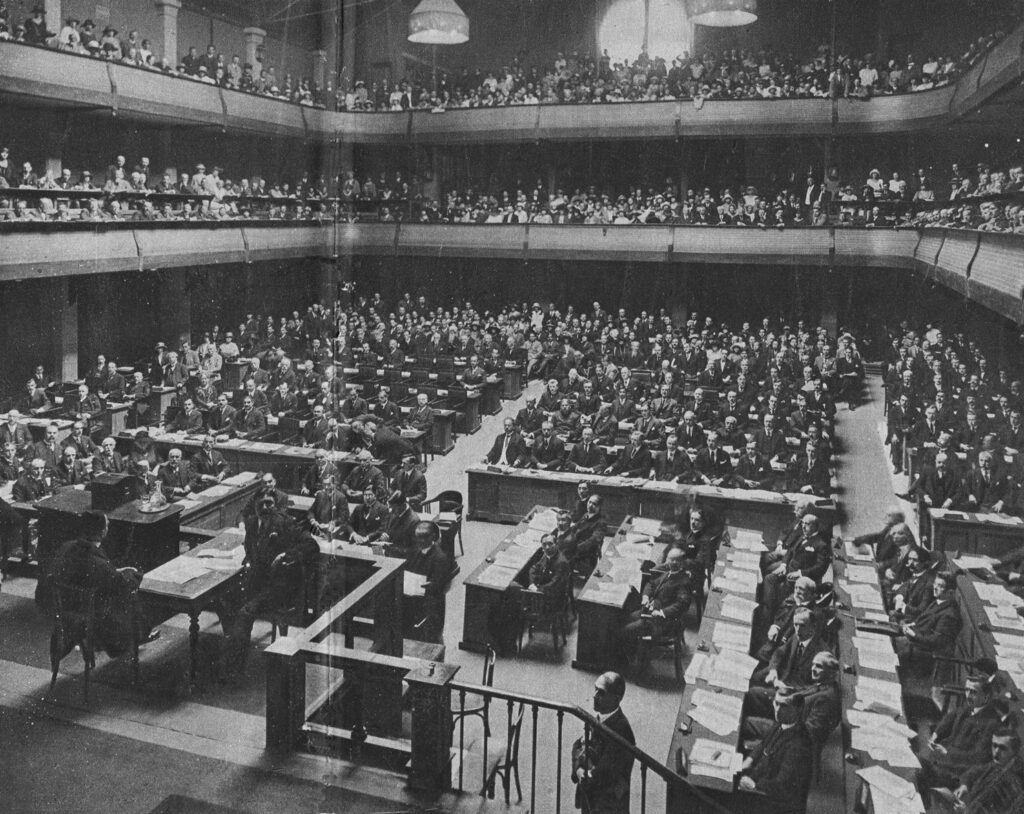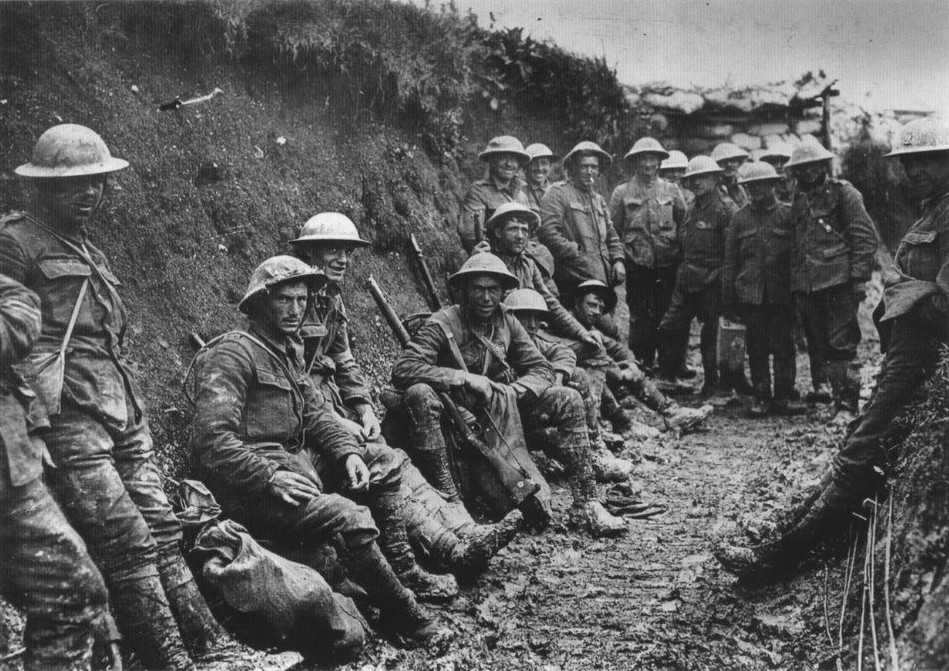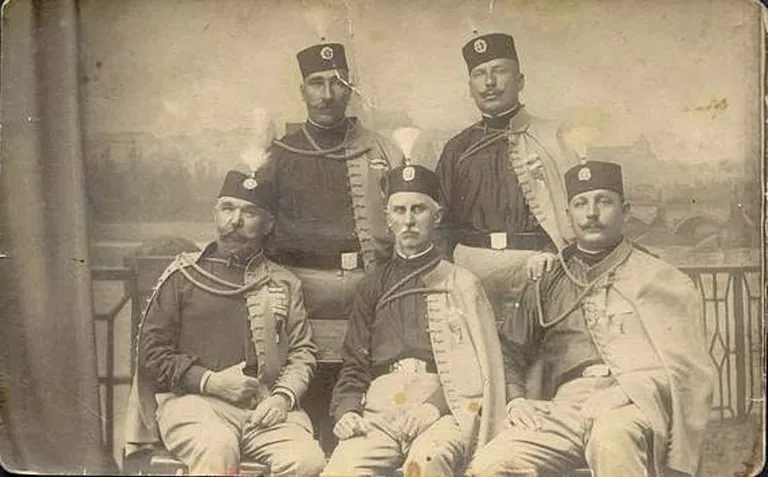The League of Nations was a coalition of major countries. They came together to resolve crises that arose during and after the First World War.
It was proposed by the victorious Allies. The Allies consisted of Great Britain, France, the Russian Empire, Portugal, Japan, and Italy. Their goal was to bring peace and equality to countries affected by the War.
While the goals of the League were idealistic, it suffered from a lack of force in implementation. This made the Second World War inevitable just two decades later.

The Conceptualization
The concept of the League of Nations can be traced as far back as 1795. German philosopher Immanuel Kant philosophized about the need for a ruling party to supervise and maintain peace between countries with disputes.
Before the First World War, there was significant support for this idea. Especially among the United States and Great Britain who were two powers that had great influence worldwide.
In 1914, British political scientist Goldsworthy Lowes Dickinson coined the term “League of Nations.” He conceptualized and campaigned for the formation of the organization.
Political Unrest
During World War I, there was significant unrest between the British and German powers. This led to an increase in cruel and inhumane practices on a global level. These atrocities included the unjust treatment of minorities and prisoners of war, racial discrimination, executions, human and drug trafficking, unsupervised arms distribution, and pillaging.
On June 28, 1914, Archduke Franz Ferdinand, who was set to inherit power over the Austro-Hungarian Empire, was assassinated. This caused a massive shift within the Central Powers, consisting of Germany, Austria-Hungary, Bulgaria, and the Ottoman Empire.
The chaos continued until Germany invaded France and Belgium on August 2 and 4, 1914, respectively. On the day Belgium was occupied, it approached Great Britain for military assistance. Britain issued an ultimatum to respect Belgian neutrality.
Germany refused to respond to the ultimatum, and King George V immediately declared war on Germany.
The War Begins
By this point, relationships between the Central Powers were heavily fractured. Countries within the ally group were at war with each other. This led to heavy losses.
Germany attempted to expand its reach by moving towards the West. They were initially successful. In 1914, Germany gained control over a larger part of France. At this point, France joined forces with the United States to seek support and secure its boundaries.
The scale of the war grew, leading to the conclusion that a peaceful resolution would be achieved.
Attempts at Peace
While it was not possible to compensate for the losses, the need for a consensus was agreed upon. This would be the only way to restore peace between the countries and their people.
On January 8, 1918, Woodrow Wilson, the 28th President of the United States, came forward with the Fourteen Points. This was a draft for the principles of the League of Nations and proposed the League’s creation.
While the involved parties approved most of the points, the United States was not directly involved in the discussions.
The Covenant
On June 28, 1919, the Treaty of Versailles was signed in the Palace of Versailles Hall of Mirrors. The Covenant of the League of Nations was adopted and came into effect with the Treaty on January 10, 1920.
The treaty included the following points:
- All parties must ensure the restriction of arms and transparency in communication.
- The welfare of the citizens is to be the responsibility of their respective governments.
- Slavery, racism, and other atrocities are to be abolished by the countries.
All members of the League of Nations supported the rules set by the Covenant. They were idealistic and difficult to follow through with sometimes. But all member nations appreciated the goals they were trying to achieve.
Establishment of the League of Nations
On January 10, 1920, the League of Nations was officially established at the Palace of Versailles.
The League of Nations consisted of three parts: the Assembly, the Council, and the Secretariat.
- The Assembly included representatives of all the member countries with equal rights to vote.
- The Council included all members of the League, regardless of their permanency.
- The Secretariat was involved with executing and maintaining the day-to-day operations of the League of Nations.
Aside from the three major components, several minor committees were established to accomplish the auxiliary and technical goals of the League.

Six days after the establishment of the League, member nations had their first council meeting to discuss and resolve important matters. Meanwhile, the first Assembly meeting of the League was held on November 15, 1920.
After a series of conferences, the headquarters of the League was relocated to Geneva at the Palais Wilson, named after President Wilson.
Achievements of the League
The League of Nations achieved many of its goals. Operations lasted from 1920 to 1946. It was the first organization to consider the welfare of populations worldwide and the consequences of conflicts between countries.
Its achievements were primarily political, including but not limited to:
- Mediating financial disputes between warring countries
- Rescuing prisoners of war
- Defining boundaries for countries at war
- Allocating resources to countries that required them
- Establishing collective security, wherein an attack on a member country would be considered an attack on all the others
- Creating the International Labor Organization (ILO) that focuses on labor rights, which is still active today
The League of Nations also educated citizens of the member nations. Its Health Committee helped fight and eradicate diseases like smallpox, tuberculosis, malaria, rabies, and cancer on an international level.
The League also helped combat the economic problems of countries like Austria and Hungary. They were facing financial crises by granting loans and bringing about financial reforms. It even improved working conditions through the International Labor Organization.
The Downfall of the League
Despite the League of Nations accomplishing many of its objectives, it failed to maintain its strength after several years. This was due to internal and external conflicts.
There are many reasons behind its failure. They include being unable to maintain diplomatic relations and lacking sufficient military strength. As the League had no military force for support, it depended on its member nations’ armies. Moreover, member countries that lent their armies for military interventions demanded compensation.
In 1931, Japan invaded Manchuria to expand its territory. Although the League ostensibly reprimanded Japan for this occupation, it couldn’t do much else. Japan, which was a permanent member nation, then left the League.
Italy, also a permanent council member, withdrew from the League in 1937. This took place after the League took a stand against the country’s 1935 invasion of Ethiopia and declined to accept Italy’s dominion over the country. Nazi Germany, too, stepped back in 1933. Spain, Hungary, and Peru left in 1939.
In 1939, Nazi Germany occupied Czechoslovakia while claiming to protect the German minority in the country. Again, the League could not effectively resist this takeover or do anything substantial to stop it. By then, it had considerably weakened with the withdrawal of many powerful permanent member nations.
Dissolution
While the League could devise laws, regulating them was impossible without the power to back them up.
President Wilson was active in introducing and establishing the League. But the lack of participation by the United States as a country did not help the League’s ability to implement the Covenant.
The League was strong due to the cooperation and secularism ensured by every member nation. The organization played a role in ensuring that the laws were followed depending on this cooperation. But according to accounts, some countries were favored over the rest. This created a series of disputes that led to the eventual demise of the League.
Another reason the League failed was the inability to maintain each country’s security. This led to a situation where member nations could not engage in diplomatic discussions.
Further, the distribution of illegal substances and armaments was limited but could not be eliminated completely.
The rise of Hitler and the souring relationships between the United States and Japan were major factors that escalated the Second World War. The final moments of the League of Nations were a direct result of these actions.
The dissolution of the League of Nations was finalized on April 20, 1946.
Legacy
The League of Nations may not have enforced all of its laws, but it lasted for 26 years and set a standard for the rest of the world to follow.
It was the first organization that supervised world affairs. It offered a broader perspective to every nation in dispute with others.
The laws created in the League of Nations also inspired its successor: the United Nations, which was founded on October 24, 1945. The UN made up for what the League lacked regarding strict enforcement and efficient communication among members.
The introduction of health organizations like the Red Cross and financial reforms were other milestones that lasted long after the League’s tenure.
The League’s failure to accomplish its goals slowly led to the Second World War. On the other hand, the League also inspired the rest of the nations to move towards a better and more peaceful future.

